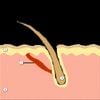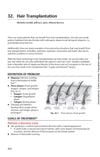Male Androgenic Alopecia: Review of Current Knowledge and Socio-Psychological Impact
January 2018
in “
HAL (Le Centre pour la Communication Scientifique Directe)
”

TLDR Male pattern baldness affects social interactions and mental health, and while treatments are being explored, hair transplants are currently the most effective solution.
The document "Male androgenic alopecia : review of current knowledge and socio-psychological impact" from 2017 reviewed the current understanding of male androgenic alopecia, its diagnosis, treatment options, and its socio-psychological impact. The study emphasized the importance of appearance in social interactions and psychological well-being, and thus the need to manage androgenic alopecia effectively. While the exact mechanisms of hair loss were not fully understood at the time, research was progressing. Various therapeutic options were being explored, but hair transplantation remained the only effective solution for regaining hair in bald areas.







